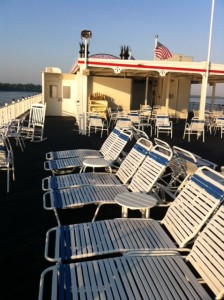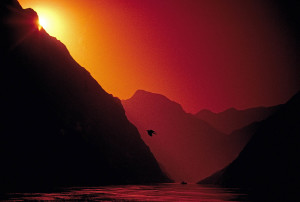I spent much of the fall of 2015 taking river cruises, in China and Europe. China’s Yangtze and Europe’s Danube, Rhine, Moselle, and Main rivers were all on the itineraries.
I’ve already blogged about the Yangtze cruise here and will write about the two European river cruises as time goes along (one was for a magazine, so I’ll have to wait for that article to appear in the spring of 2016 before writing about it here, but my Danube cruise accounts will appear in this space shortly).
I was already sold on river cruising before taking the last three — two of my past favorites were the Nile in Egypt and the Mississippi from Memphis to New Orleans — but with every new river cruise I take, the more I like them.
As much as I enjoy ocean cruising, river cruising does have certain advantages over high-seas voyages: You’re always close to shore and the sights along the river banks; the waters are generally placid so seasickness is rare; the ships are usually smaller, allowing you to get to know more of your fellow passengers and avoid long delays getting on and off the ship; ports often include small villages that large ocean-going ships can’t reach; shore excursions are often included in the price of the trip; and, if you’re an adult seeking peace and quiet, you’re not likely to encounter many children on a river cruise.

Grab a deck chair and watch the world go by on American Cruise Lines’ Mississippi River voyages. Photo by Clark Norton
Of course, there are also potential downsides, depending on your travel preferences: River cruises are often more expensive than mainstream ocean cruises (though are also often more inclusive); cabins are often smaller than on ocean-going ships; shore excursions are often more cultural- than action-oriented; there are fewer entertainments and much less glitz; and dining options are usually fewer as well. River cruises are typically port-intensive and “sea days” with no stops are rare.
If some of the potential downsides sound more like upsides to you, then you’re an ideal candidate for river cruising and for a new river cruising guide I recently came across, put together by the folks at Consumer Affairs, a private consumer news and advocacy organization based in Lake Tahoe, Nevada.
The guide is compact and a quick read, delving into features like pricing, cabins, itineraries and destinations; different types of river cruises; who the primary groups of river cruisers are; and a section including river-cruise company profiles and reviews. There’s also a big take-out on why river cruising is a good option for solo travelers.
You can access the guide here.
Happy reading, and happy river cruising!
Travel Tip of the Day: Keep in mind that river cruises can be disrupted by water levels that are too high (from heavy rains) or too low (from drought). In those cases, river cruise lines usually substitute buses for river ships on affected routes, which can result in severe disappointment. If you book your cruise fairly close to departure — not always easy, since many sell out — check the weather patterns in the region you want to travel to, and check the cruise lines’ websites as well for warnings and alerts; you might be able to re-book.













Leave a Reply